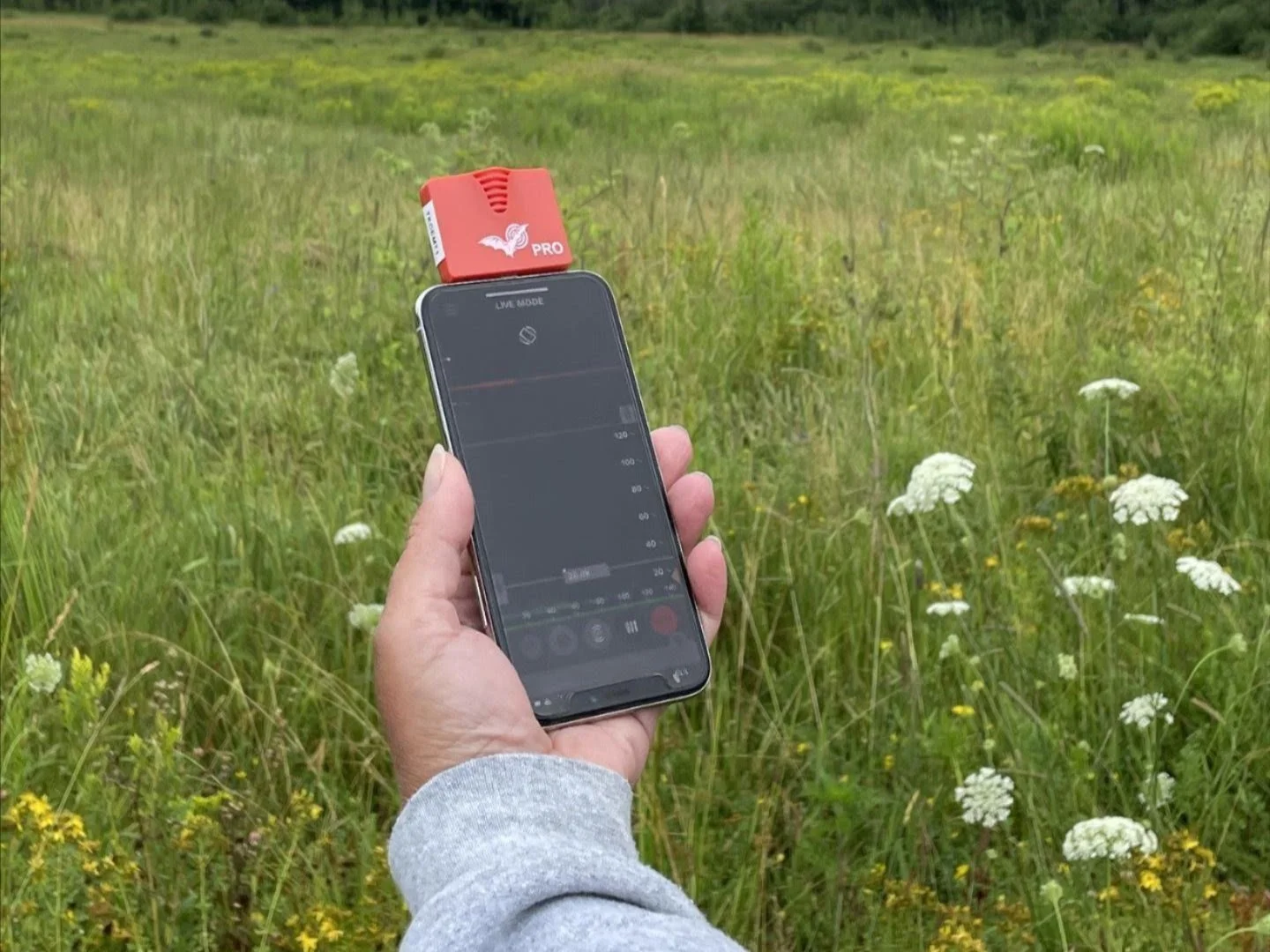
Community Science
These community science programs offer opportunities for local residents to contribute to important conservation and research efforts in the Central Algoma region. By participating in wildlife monitoring, water testing, and biodiversity tracking, volunteers help collect valuable data that supports the protection of our natural environment.
Bat Monitoring and Education Program
The Bat Monitoring Program helps track local bat populations using specialized acoustic recording devices placed throughout the Central Algoma region. Volunteers and staff collect data that is analyzed to better understand bat activity and species presence. This information contributes to long-term conservation efforts and supports national bat monitoring initiatives. The program is a great opportunity for community members to get involved in local wildlife research and conservation.
Water Quality Monitoring Program
The Water Quality Monitoring program engages volunteers in regular testing of lakes and streams to assess ecosystem health and safety for recreational use. Participants gather water samples to analyze parameters like clarity, nutrients, and contaminants. The data helps identify trends, inform conservation efforts, and guide land and water management decisions. It’s a hands-on way for community members to contribute to protecting and improving local water bodies.
Desbarats Christmas Bird Count
The Desbarats Christmas Bird Count is a single-day event held each year in late December as part of North America's longest-running citizen science initiative. Participants record every bird seen within a 12 km radius, either as field observers or by watching feeders at home. The data collected helps scientists monitor bird populations and distribution across the continent. This annual count is a fun and meaningful way for community members to contribute to bird conservation.
iNaturalist
The iNaturalist project invites community members to share photos of plants and wildlife they encounter throughout the Central Algoma area. These observations help build a detailed record of local biodiversity and support conservation planning. Anyone can participate by uploading photos, even without knowing the species name. The data contributes to ongoing monitoring efforts and is used by scientists, land stewards, and conservation organizations.
Bluebird Box Trail
The Eastern Bluebird Trail is a partnership with Algoma University to support cavity-nesting birds in the Desbarats area. Fifty nest boxes were installed on nature preserves and private properties and are monitored throughout the breeding season. Eastern Bluebirds, Tree Swallows, House Wrens, and Black-capped Chickadees have all successfully used the boxes. Volunteers are needed each year to help monitor and maintain the trail.





